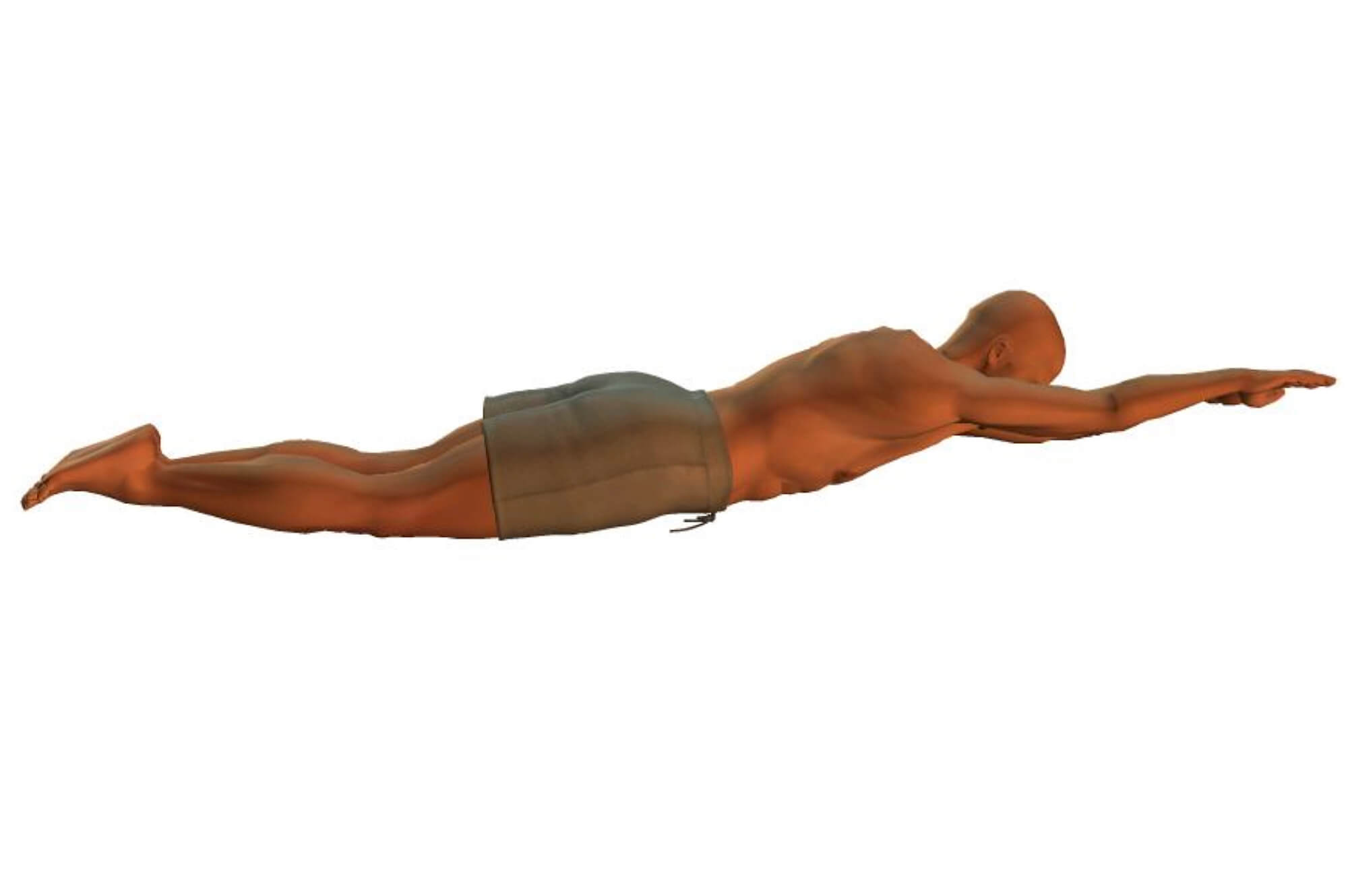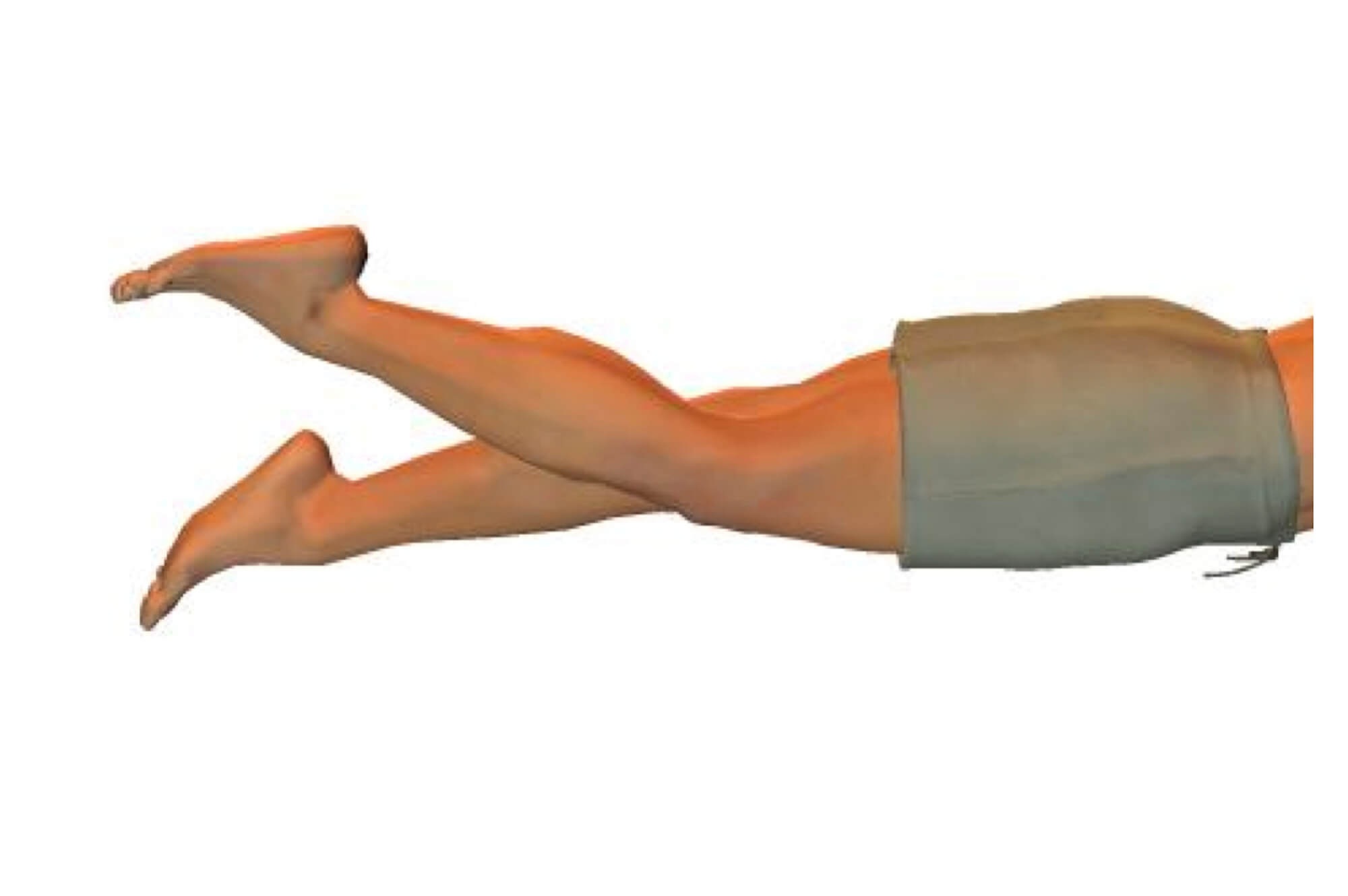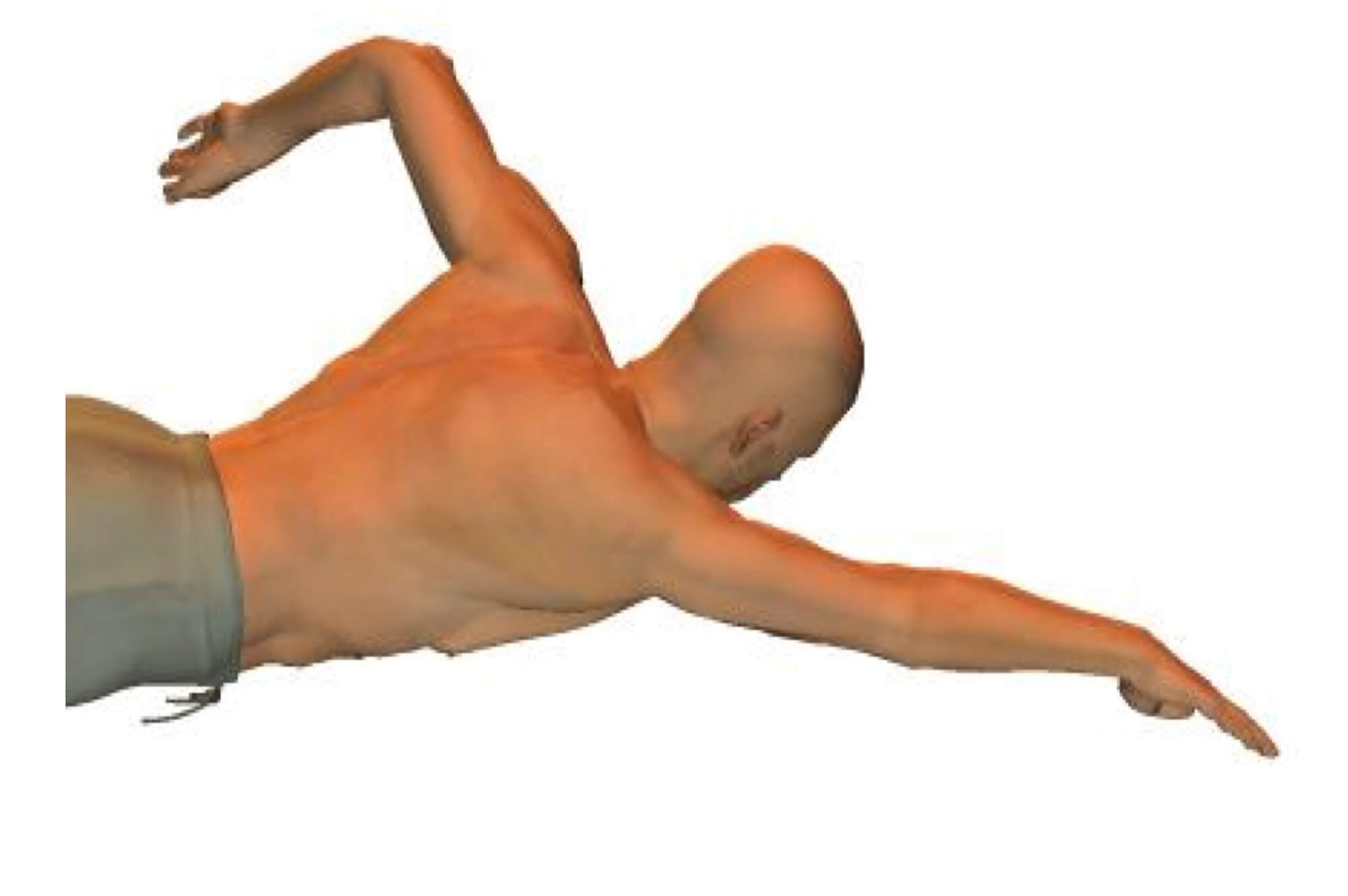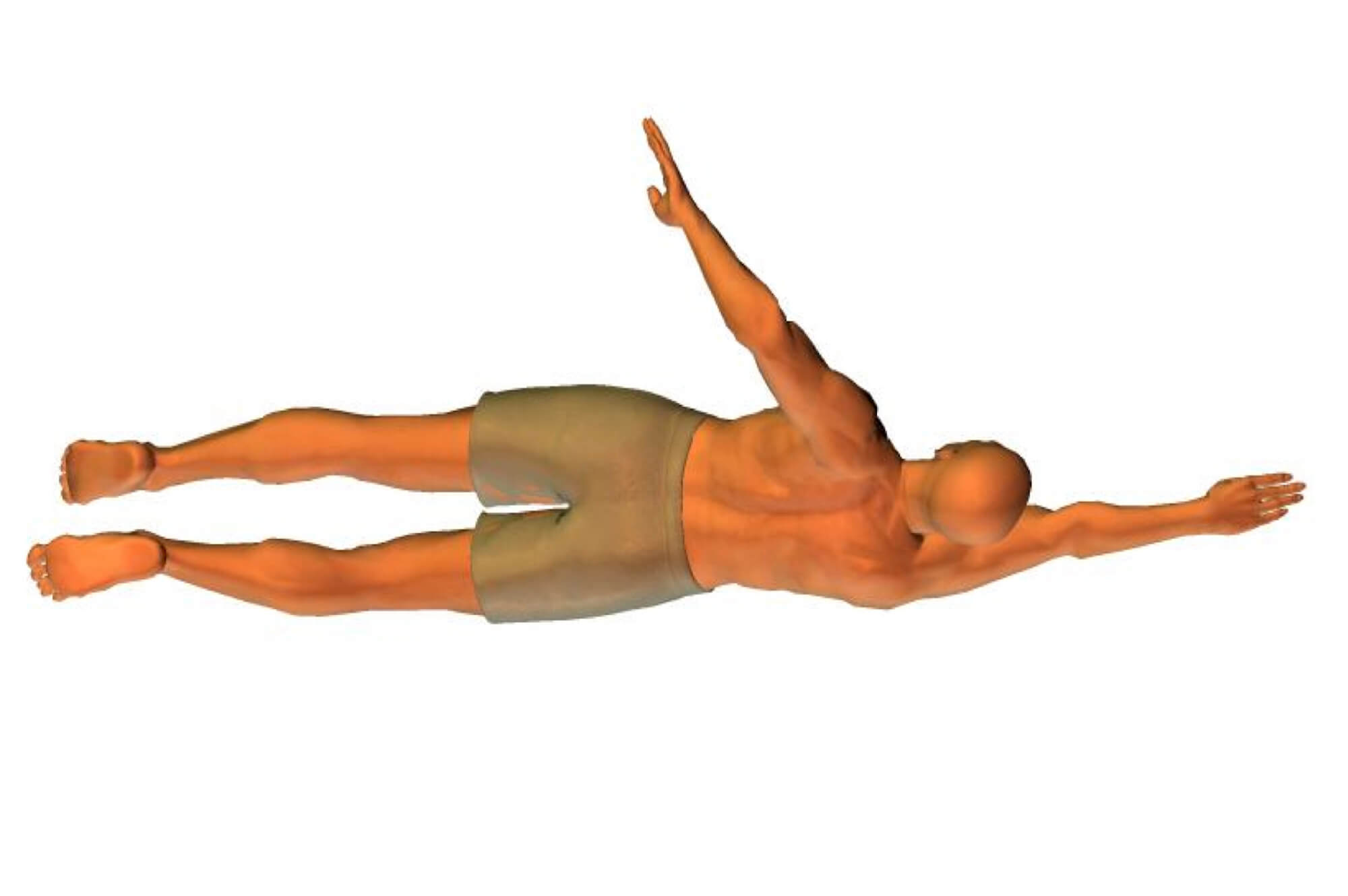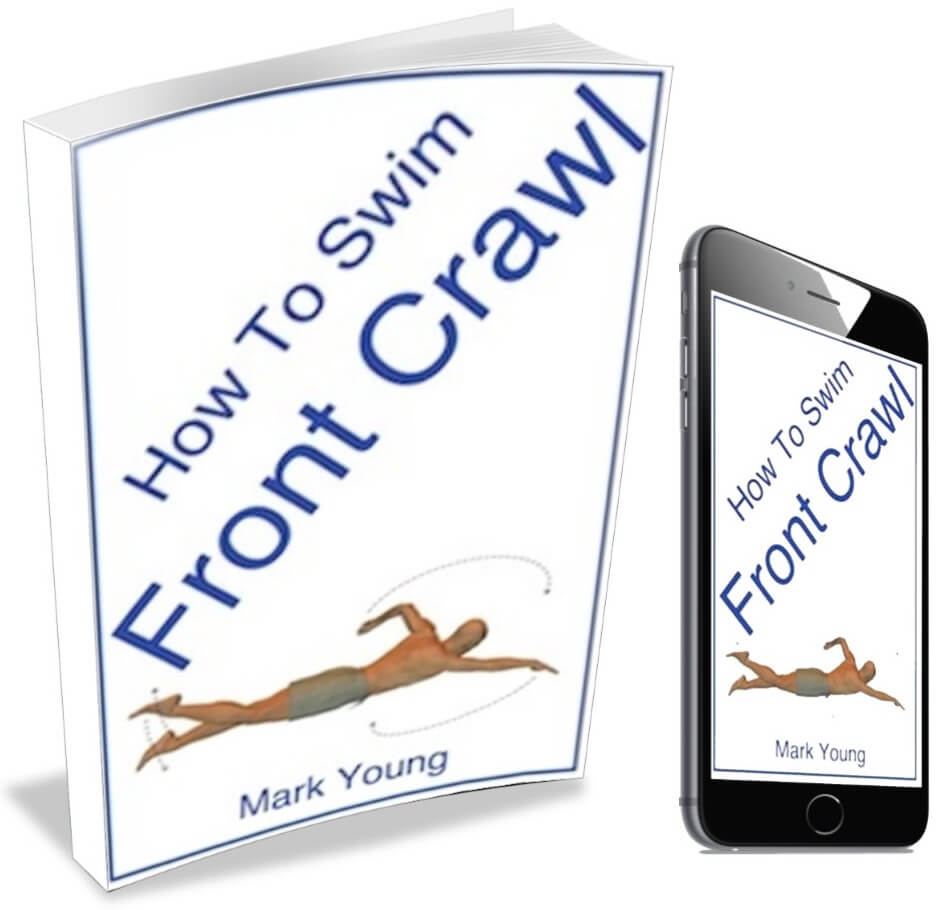- Swim Teach Home
- front crawl
- Front Crawl Breathing
Front Crawl Breathing – Beginner Tips and Tricks
So, you've started learning how to swim front crawl stroke, and you're wondering, "How exactly does front crawl breathing work without swallowing half the pool?" You're not alone - trust me. Breathing is one of the trickiest parts of front crawl for beginners, but the good news is you can totally master it with a bit of know-how and practice.
Allow me to break it down for you and enlighten you.
So, What's the Deal with Front Crawl Breathing?
When it comes to front crawl, breathing isn't just about getting air. It's about finding your rhythm in the water, staying relaxed, and keeping things smooth. Here's what really matters:
- Head Position: Keep it chill. Your head should be looking straight down at the bottom of the pool. Not forward. Not sideways. Just down. This helps your body stay nice and streamlined.
- Timing Your Breaths: Don't wait until you're gasping. Start turning your head just as your arm pulls through the water. It's a quick sip of air, then back in the water before you know it.
- Exhale Underwater: This one's huge! Blow your bubbles out underwater so you're not trying to exhale and inhale when your face pops up. That's way too much to do in one quick breath.
HOW TO SWIM FRONT CRAWL EBOOK: everything you need to master front crawl swimming stroke. 22 easy drills that focus on each part of front crawl technique. From body position to breathing and timing. Decades of teaching experience all packaged into 1 easy file. Download to your device and master front crawl TODAY! (click here for an INSTANT preview).
Don't miss out! Click here for more details on how to get your copy.
Which Breathing Style Should You Try?
Let's chat about two common techniques. One might suit you more than the other - and that's totally okay. Everyone's different.
Trickle Breathing
When learning step-by-step front crawl, think of this like humming underwater - a slow and steady exhale through your nose or mouth while your face is in the water. This keeps your body relaxed and helps you avoid that panicky, breathless feeling. Most beginners find this the easiest way to stay calm, collected and in control.
Explosive Breathing
This one's more like a "kaboom" of air just before you turn to breathe. Some swimmers like it, especially in short sprints. But if you're just starting out, it can be a bit much - and can leave you feeling puffed quickly.
My advice? Start with trickle breathing. It's like learning to ride a bike with training wheels - a gentler way to build confidence.
The Power of Pursed Lips...
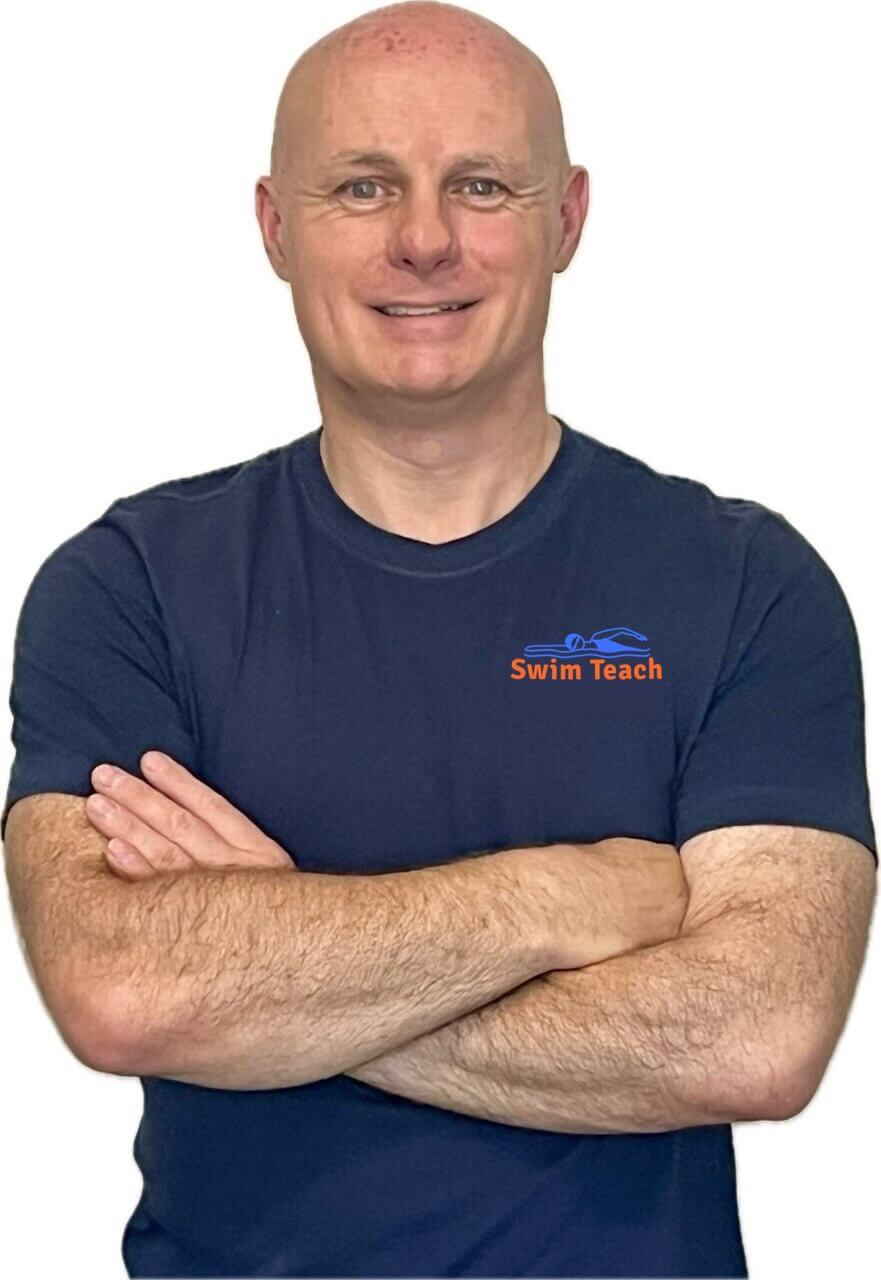
"One technique I've found incredibly helpful for swimmers struggling with rushed, panicked breathing is teaching them to exhale through pursed lips. It might feel a bit odd at first, but this small tweak gives you much more control over your breath. Instead of dumping air out all at once or holding it in too long, you release it in a steady, controlled stream.
I often tell swimmers to imagine they're gently blowing bubbles through a straw. That slow exhale keeps their lungs relaxed and helps them avoid that frantic, gasping inhale that throws everything off. Once you get a feel for it, breathing becomes smoother, calmer, and more rhythmic - like the stroke itself."
FREE EBOOK: all of the technique tips here can be found in my 'Front Crawl Technique' book, along with a couple of bonus drills to help you perfect some essential parts of your swimming stroke.
Don't miss out! Click here to grab a FREE copy of my book.
Common Mistakes (and How to Dodge Them)
Okay, let's get real. Everyone makes mistakes at the start. Here are a few you might bump into and how to steer clear:
- Holding Your Breath: This one's sneaky. You might not even realize you're doing it. But it messes with your rhythm and makes you feel like you're drowning in seconds. Just remember: blow those bubbles!
- Lifting Your Head: It's tempting, I know. You want to see where you're going. But lifting your head sends your hips and legs sinking down. Instead, roll your body slightly and just turn your head and shoulders to the side - like you're peeking out of bed.
- No Rhythm: Breathing every now and then just doesn't work. You'll either end up out of breath or too focused on counting strokes. Try breathing every 3 strokes (that's called bilateral breathing). It keeps you balanced and helps you get into the zone.
"Look at Your Shoulder" - My Go-To Fix That Works Every Time!

"One of the most common breathing mistakes I see in front crawl is swimmers lifting their head instead of rolling to the side. When that happens, the hips drop and the legs sink - and suddenly, you're swimming uphill.
A teaching point I always use (and one that's helped countless pupils!) is to tell them to "look at your shoulder" as they breathe. This simple cue encourages a natural head and shoulder roll, keeping one goggle in the water and helping the body stay aligned. It's a small adjustment, but it often leads to a big "aha!" moment - and a smoother, more balanced stroke.
I've had swimmers come up after practice saying, "It finally felt easy!" - and almost every time, it was right after they started using the "look at your shoulder" cue. It's one of those subtle changes that fixes a dozen things at once. You'll feel the water glide past your ear instead of crashing into your forehead, and your legs stay up without extra effort. When the roll replaces the lift, breathing becomes just another part of the rhythm - not a disruption."
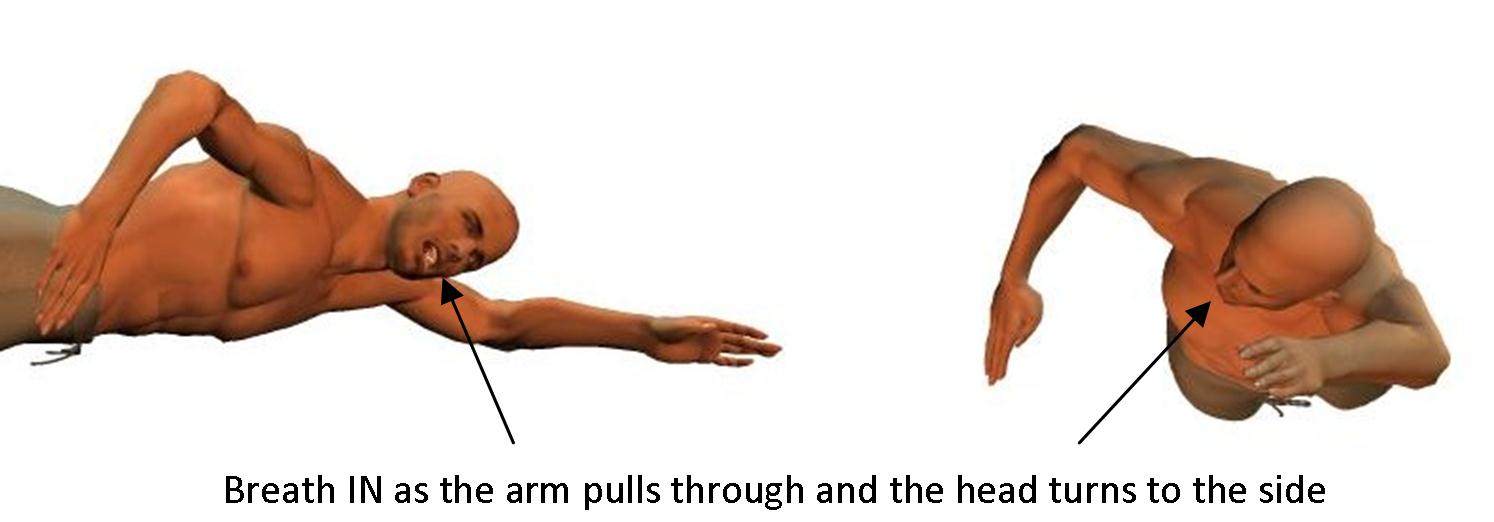 Front crawl breathing technique
Front crawl breathing techniqueWhat Are Some Easy Front Crawl Breathing Drills?
Let's add a few simple drills to your pool routine - nothing fancy, just stuff that works.
1. Sink-Down Drill
Stand in shallow water, take a deep breath, and slowly exhale as you let yourself sink. This one's all about getting comfy with blowing bubbles and feeling in control as you exhale to go underwater.
2. Kickboard Breathing Drill
Grab a kickboard, face in the water, and practice your exhale. Every few kicks, turn your head for a breath. This drill helps you nail the timing without worrying about arms.
3. 12-Kick Switch
Swim on one side for 12 kicks, then switch. It might feel a bit awkward at first, but it helps with rotation and breathing — kind of like dancing in the water.
a top tip for breathing like a pro...

"One of the most effective changes I've made with struggling swimmers is simply getting them to slow down their stroke. It sounds counterintuitive - most think swimming faster means moving faster. But what I've seen, over and over again, is that a rushed stroke leads to panic breathing, wasted energy, and poor technique.
When a swimmer slows things down - just slightly - it gives them more time to roll, breathe, and settle into a rhythm. It's like turning down the background noise so you can hear the music. Suddenly, their breathing becomes smooth instead of rushed, their arms recover cleanly, and their legs stop thrashing. Not only does this save energy, it actually feels easier - and they can keep going longer without gasping for air."
FAQ
Why do I get out of breath so quickly when swimming front crawl?
Why do I get out of breath so quickly when swimming front crawl?
It's usually because you're either holding your breath underwater or trying to do all your breathing on the inhale - which doesn't give your lungs time to catch up. The fix? Exhale slowly through your nose or pursed lips while your face is in the water. That way, when you turn to breathe, you're just inhaling - not rushing both in and out at once.
How often should I breathe in front crawl?
How often should I breathe in front crawl?
It depends on your comfort and fitness level. Beginners often start with every 2 strokes (same side) to stay relaxed. As you improve, try breathing every 3 strokes - known as bilateral breathing - which helps with rhythm and balance.
Is it better to breathe through my nose or mouth when swimming?
Is it better to breathe through my nose or mouth when swimming?
Most swimmers find it easiest to exhale through the nose or pursed lips and then inhale through the mouth. Blowing bubbles underwater with pursed lips helps keep your breathing steady and prevents gasping.
Should I lift my head to breathe?
Should I lift my head to breathe?
No - lifting your head causes your hips and legs to sink. Instead, roll your head and shoulders to the side, keeping one goggle in the water. A great cue I teach is to "look at your shoulder" as you breathe - it keeps you aligned and relaxed.
What's trickle breathing, and why is it helpful?
What's trickle breathing, and why is it helpful?
Trickle breathing is a slow, steady exhale while your face is in the water. It helps prevent panic breathing, keeps your rhythm smooth, and makes your inhale easier. It's the best starting point for beginners learning to breathe calmly and consistently.
Can I breathe on the same side every time?
Can I breathe on the same side every time?
Yes, especially when you're starting. Breathing every 2 strokes on your preferred side is totally fine. As you gain confidence, try mixing in bilateral breathing (every 3 strokes) to stay balanced and improve endurance.
Download your front crawl cheat sheet
Need something handy with you on the poolside to help? No problem!
Download this front crawl cheat sheet to keep handy during your next swim. It's simple, visual, and easy to follow.
Front crawl breathing technique video
Watching someone else do it can really help things click. Here's a video that might just help you out.

front crawl breathing tips all in one ebook
My 'How To Swim Front Crawl' ebook contains some basic front crawl breathing exercises and shows how to get your breathing to fit into your arm pull and leg kick actions (click here for an instant preview). Your front crawl breathing timing will be slick and when you swim front crawl, breathing technique perfected, you will be swimming longer distances with less effort.
Click below to download a copy to your computer, tablet or mobile device. Or, click here for information about my fantastic book.
I am a member of the Amazon Associates Program and I will earn a commission from qualifying purchases at no extra cost to you.
Real-Life Questions and Answers
Swimming For Longer Distances Without Getting Out Of Breath. 'How do I learn to sustain front crawl for more than 2 lengths and swim for longer?'
Increasing Front Crawl Endurance And Front Crawl Speed. 'I am working on increasing front crawl endurance but still getting somewhat out of breath while breathing every 3rd stroke on opposite sides.'
Basic Front Crawl Swimming Tips. 'I am just starting to swim, and I'm having trouble with my front crawl. I feel like I'm wasting a massive amount of energy for not a lot of benefit.'
Why Do I Get Tired Swimming Front Crawl? 'I have a question about breathing while doing front crawl. In the lane swim tonight, I found out that several of us are having a similar problem...'
Front Crawl Technique Gets Me Out of Breath. 'I would like some swimming advice as my front crawl technique gets me out of breath. I've been active all my life. I've run and cycled for many years. I am 56 yrs old.'
When I swim 50 metres, I am very slow; when I get to the end, I am breathless and exhausted. 'Becoming exhausted during a front crawl is very common and not something that should cause embarrassment or put you off your swimming.'
I have trouble with freestyle breathing on the left side and started breathing every 4th stroke just on the right side. 'Breathing every third stroke is usually the ideal pattern to start with, and then swimmers usually switch to breathing every stroke over a long distance.'
Why am I sinking when I start rotating my arms? 'There are a few reasons why you might start to sink as you begin your arm action during freestyle swimming.'
My legs sink when breathing for freestyle. 'Freestyle breathing techniques can be frustrating sometimes, and sinking legs can be a very common occurrence when you're first learning.'
I can swim freestyle, but my face is still in the water when I try to breathe on my side. 'It could be as simple as your head being too deep in the water. Have someone check your body position to see if firstly you are flat and horizontal and secondly how deep your head is.'
I need some freestyle breathing technique tips. 'Firstly, ensure you are breathing out into the water and not holding your breath. Breath-holding makes swimming very difficult, and many people swim holding their breath and do not realise they are doing it.'
